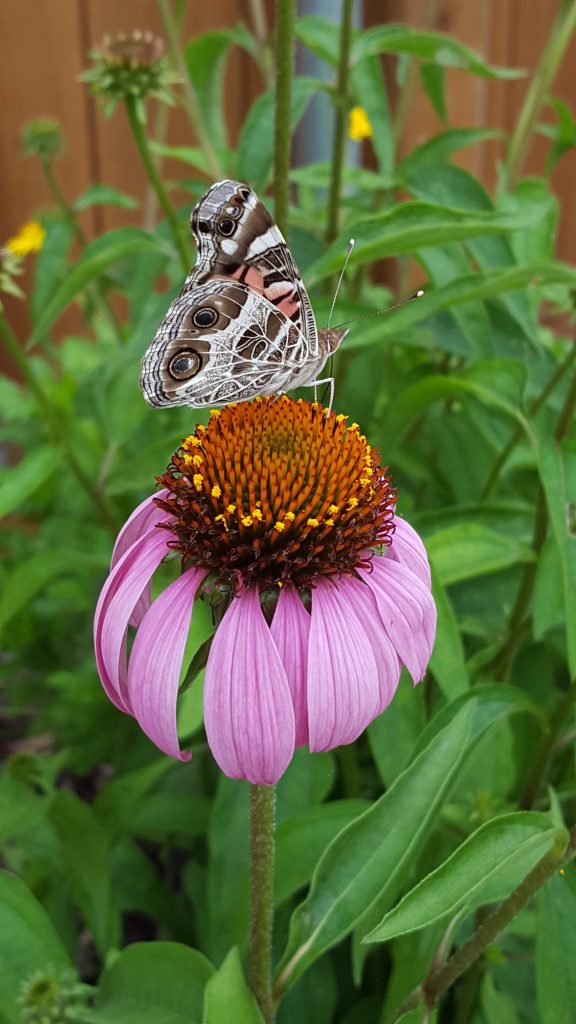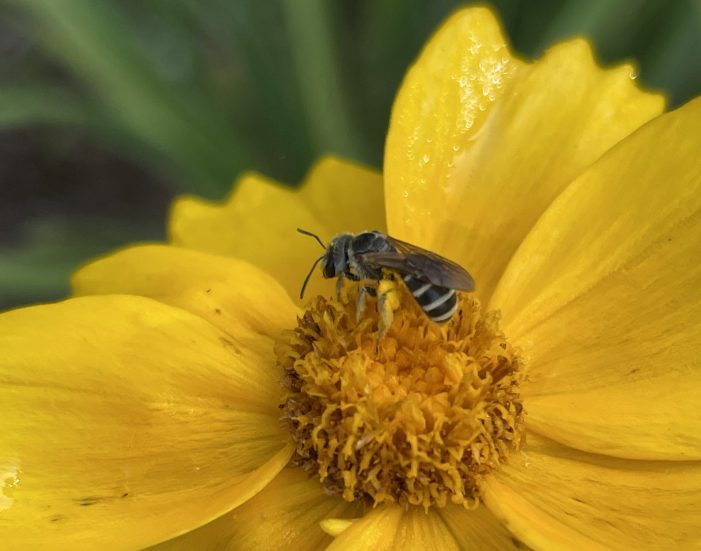 Rockwall, TX (May 13, 2024) – As we spend the spring and summer months tending our flower and vegetable gardens, it is always nice to devote some time to observing and supporting nature’s pollinators.
Rockwall, TX (May 13, 2024) – As we spend the spring and summer months tending our flower and vegetable gardens, it is always nice to devote some time to observing and supporting nature’s pollinators.
What is a pollinator? A pollinator is anything that carries pollen from one flower to another to bring about fertilization. Honeybees might come to mind first; however, birds, bats, moths, butterflies, beetles, bumble bees, wasps, and other animals function as pollinators. Many of our food crops and the beautiful flowers now growing in our gardens rely on the success of pollinators.
The ideal habitat for pollinators should include a wide variety of native and adapted flowering plants, trees and shrubs with varying heights and different blooming periods. When making plant selections, note that native plants attract more native pollinators. Plants with single flowers featuring one ring of petals and a central disc are extremely effective in attracting pollinators. With that said, pollinators vary in their preference for flower shape and color, so include a variety in your landscape.
In creating the most inviting spaces for pollinators, keep in mind that they need shelter from weather and predators. Consider allowing a section of your landscape to “go wild” with either unmown lawn, fallen leaves or small piles of twigs. Depending on your space, you could integrate beautiful perennials right into landscape beds or create pocket prairies and meadows with pollinator favorites.

The Wonder of Hummingbirds
Hummingbirds are among our most beautiful garden inhabitants and easy to attract. When supplying supplemental food for hummingbirds, a good feeder is a simple one that comes apart for easy cleaning. Saucer-like feeders that have feeding ports on top allow hummingbirds to access the sugar water while keeping bees away. The preferred nectar is a mixture of 4 cups of water and 1 cup of sugar, heated for three minutes in your microwave and stirred until the sugar is dissolved and cooled. Store the excess in the refrigerator and change every four days to prevent mold; cleaning the feeder each time nectar is added. Do not add red dyes to hummingbird sugar water. Natural flower nectar is clear and feeders have colorful parts that help attract hummingbirds. Hummingbirds usually arrive in our area around March or April and leave in October or November.
Want to Ask a Master Gardener?
Rockwall County Extension Master Gardeners make it their mission to provide research-based horticultural advice and education to the residents of Rockwall County. There are multiple ways to Ask a Master Gardener! Visit our booth at the Rockwall Farmers Market, May through September on the second and fourth Saturday of each month. Stop by the Rockwall County Library and visit Master Gardeners every first and third Wednesday, 10am to noon and every Wednesday, 10am to noon at the Texas AgriLife Extension Office, 915 Whitmore Drive, Suite B, Rockwall. If you can’t come by in person, call 972-204-7660 or email rockwallmg@ag.tamu.edu anytime and a Master Gardener will respond to you in a timely manner.
Tried and true pollinator favorites suggested for Rockwall County:
- Autumn Sage (Salvia greggii)
- Bee Balm
- Black-eyed Susan
- Butterfly weed
- Cosmos
- Flame Acanthus
- Gregg’s Mistflower
- Indian Blanket
- Lanceleaf coreopsis
- Mealy-cup or blue sage
- Mexican bush sage
- Native milkweeds
- Purple Coneflower
- Texas Lantana
- Turk’s Cap
- Zinnia
By Rockwall County Extension Master Gardeners. Photos by Jen Bily and Michele Campbell. Blue Ribbon News is pleased to welcome ‘Here We Grow: Tips from Rockwall County Master Gardeners’ as an exclusive new feature in our publication.



